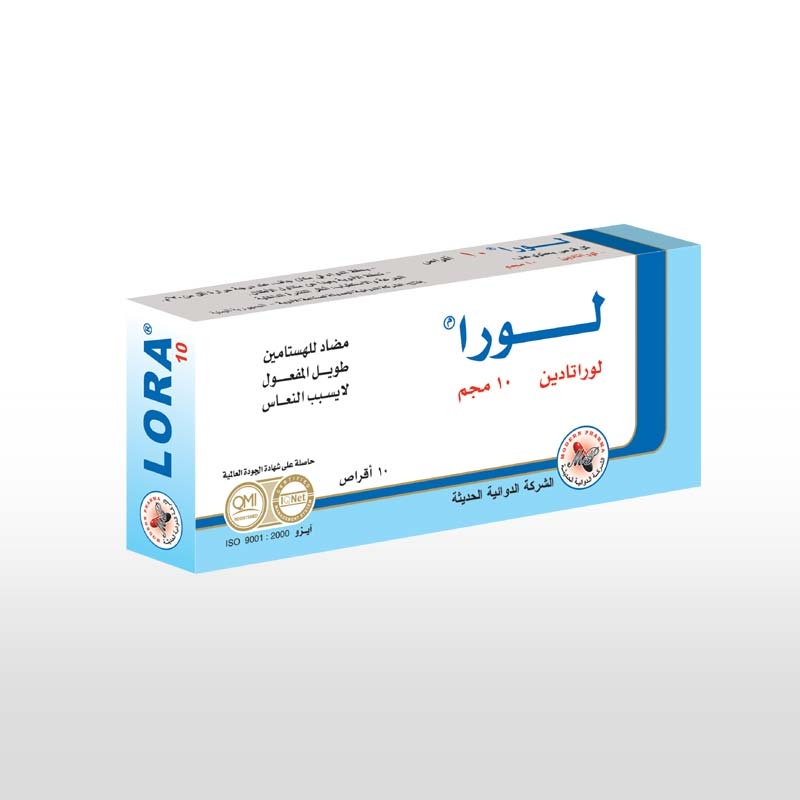LORA
-Loratadine, a piperidine derivative related to azatadine, is a
potent long acting tricyclic antihistamine with selective
peripheral H1- receptor antagonistic activity. It is no sedating
antihistamine with no significant sedative or antimuscarinic
activity.
- Loratadine is rapidly absorbed from gastrointestinal tract
after oral administration, peak plasma concentrations being
attained in about one hour.
- Bioavailability of Loratadine is increased & time to peak
plasma concentration is delayed when administered with food
- Loratadine undergoes extensive metabolism. The major
metabolite, descarboethoxyloratadine (desloratadine) has a
potent antihistamine activity.
- Loratadine is about 98% bound to plasma proteins,
descarboethoxyloratadine is less extensively bound .
- Loratadine & it’s metabolites have been detected in breast
milk, but don’t appear to cross the blood brain barrier to a
significant extent .
- Most of dose of Loratadine is excreted equally in the urine &
faces, mainly in the form of metabolites .
- The elimination half life for Loratadine & it’s metabolites
(desloratadine) are 8.4 & 28 hour respectively.


